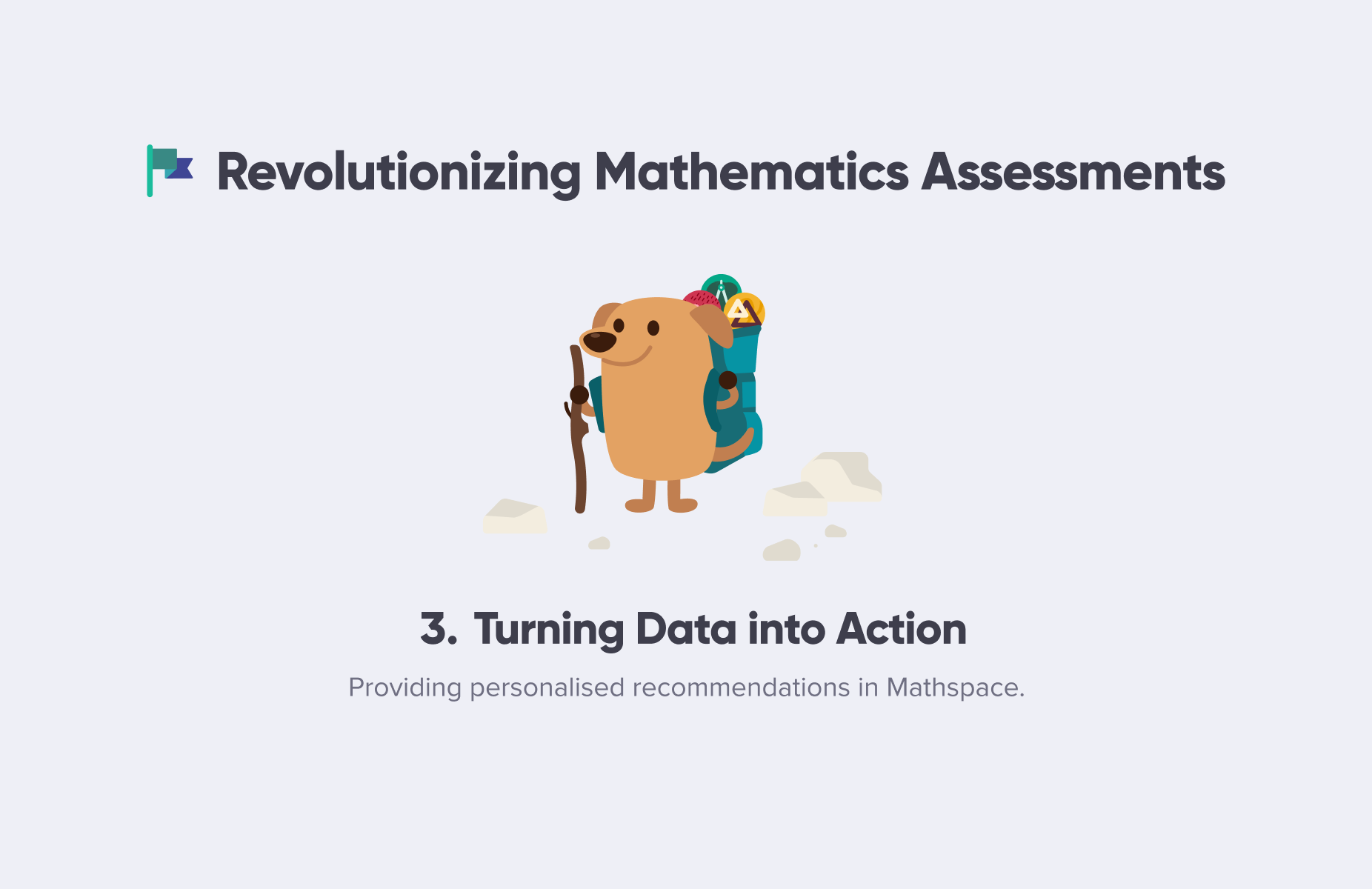Revolutionizing Mathematics Assessments Pt. 3: Turning Data into Action
The third of a four-part series looking at how Mathspace Check-Ins work, why they matter and how to implement them effectively. Pt. 3 introduces the personalised recommendations powered by Check-Ins.

In parts one and two of this series, we aimed to provide a detailed explanation of how Check-Ins actually work. In this third part of the series, we refocus to address the question: What is assessment for?
Assessments aren't, or shouldn't be, just about gathering data – they're about turning that data into action. The results of valid assessment can inform priorities and decisions at all levels of the educational system, from classroom instruction to policy-making.
How we take action
At Mathspace, we focus on providing actionable ways for students to address the gaps and weaknesses identified by the Check-Ins themselves. Each student receives personalized recommendations based on the identified gaps and the confidence score assigned to that assessment. This approach fosters equity in the classroom as it allows for individualized learning and growth.
It is also important to put this into the classroom context. Addressing students' gaps and weaknesses must be achieved alongside the acquisition of new knowledge and understanding as they progress through the curriculum. It is in this context that a student’s “skills focus” in Mathspace becomes important.

The skills focus is set as students work on practice tasks in Mathspace, including any set by the teacher. This skills focus then determines the personalized recommendations shown to the student on their dashboard.
In this way, we provide students with practice on relevant prerequisite content so that they are better prepared for the grade-level work they need to cover in class. Teachers can therefore focus on covering that grade level content, providing opportunities for collaboration, peer learning and mathematical talk.
In the fourth and final post in this series, we look at how schools can actually implement Check-Ins.
If you can't wait and you would like to explore check-ins for yourself, you can sign up for a free student or teacher account or try our demo Check-In.
